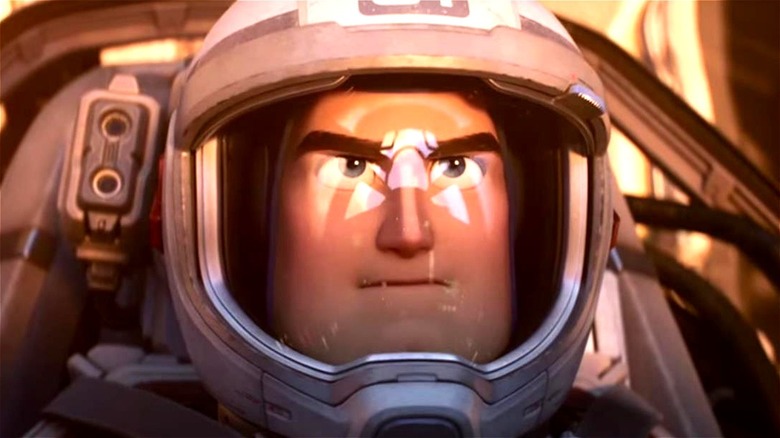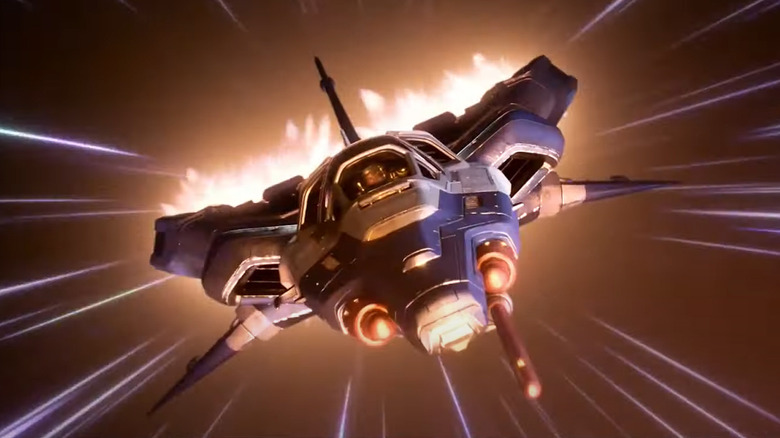Lightyear Director Angus MacLane Opens Up About His Approach To Telling The Story Of Buzz
On October 27, Pixar debuted the first trailer for "Lightyear." The film, a spin-off of the "Toy Story" franchise, promises to tell "the definitive origin story of Buzz Lightyear," the human version of the character who apparently inspired the toy voiced by Tim Allen in the first four "Toy Story" films. Disney first announced "Lightyear" during its annual Investor Day event in late 2020 (via Deadline).
Now, the trailer for "Lightyear" has arrived to provide audiences with their first look at the man that inspired the iconic toy. This latest incarnation of the Buzz Lightyear character is notably voiced not by Tim Allen, but by Captain America actor Chris Evans, further distancing the "real" version of the character from the toy that audiences have known prior to the upcoming spin-off.
In conjunction with the trailer's release, D23, the official Disney fan club, published an interview with "Lightyear" director Angus MacLane, who provided some new insight into how he and his team went about creating the look and style of the highly-anticipated animated film.
Lightyear's director was inspired by both Toy Story history and classic science fiction designs
Technically, the idea for a standalone Buzz Lightyear movie is as old as "Toy Story." As recounted by D23 writer Zach Johnson, Pixar's Chief Creative Officer, Pete Docter, actually revealed during the initial "Lightyear" announcement that the "Toy Story" team always knew the toy version of Buzz Lightyear was based on a blockbuster movie character of the same name.
With that in mind, director Angus MacLane — who describes Buzz Lightyear as a character he's "always been pretty close to as a fan" — pitched his idea for "Lightyear" as a movie that might exist in the "Toy Story" world. "I said, 'Maybe there was a movie starring Buzz Lightyear, and that's what Andy saw that made him want a Buzz Lightyear action figure. Why don't we just make that movie — and make it awesome?'" MacLane recalled.
The director then went on to explain how the first step towards determining the film's visual look came from Buzz's ship, a real-life model of which was built by a former Industrial Light & Magic employee. According to MacLane, the film's aesthetic emerged, in part, from an effort to adapt the look of that ship for animation. "I also wanted to make the world feel really tactile and chunky," MacLane said. "There's a lot of different sci-fi design aesthetics, but especially in that era that, the ships and the materials were very chunky and the industrial design for them was really robust."
Fortunately, fans will get to see exactly what MacLane means when "Lightyear" opens in theaters on June 17, 2022.

